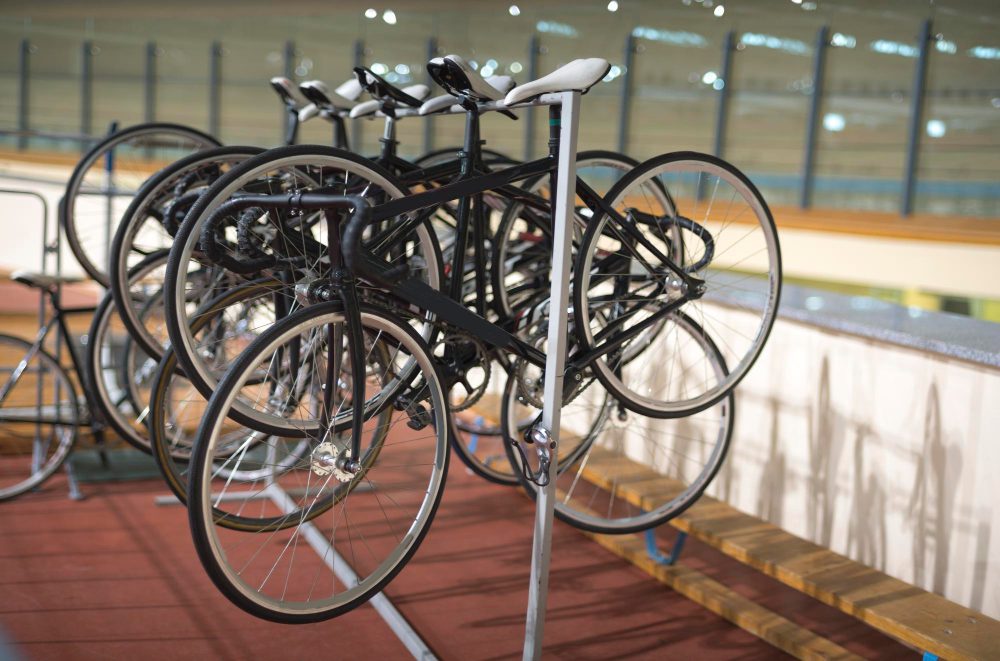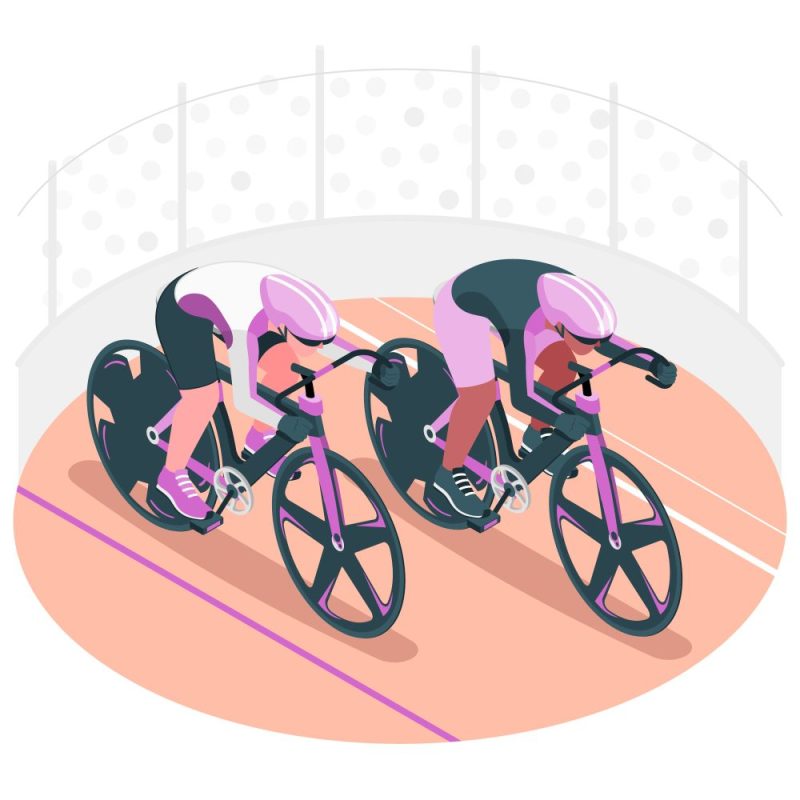Are Fixed Gear Bikes Bad for Your Knees?
Fixed gear bikes, also known as fixies, have gained popularity in recent years for their simplicity and minimalist design. However, there is often a debate surrounding the impact of fixed gear cycling on knee health. In this article, we will explore the potential risks and benefits of riding fixed gear bikes and provide insights to help you make an informed decision.
Understanding Fixed Gear Bikes
A fixed gear bike is a type of bicycle that lacks a freewheel mechanism. This means that when the rear wheel turns, the pedals turn as well. Unlike multi-speed bikes, fixed gear bikes have just one gear ratio, which requires the rider to continuously pedal to keep the bike moving.
Potential Impact on Knee Health
One concern often raised about fixed gear bikes is their potential impact on knee health. Riding a fixed gear bike requires constant pedaling, which may lead to increased strain on the knees, especially during prolonged rides or when tackling hilly terrains.
However, it’s important to note that the impact on knee health largely depends on how the bike is set up and how the rider adjusts their pedaling technique.
Proper Bike Fit and Adjustment
Ensuring your fixed gear bike is properly fitted to your body is crucial for minimizing strain on your knees. A bike that is too large or too small can result in improper leg extension, leading to additional stress on the knees.
Additionally, it’s essential to set up your gear ratio appropriately. A gear that is too challenging may force excessive pressure on the knees, while a gear that is too easy may lead to increased cadence and potential knee discomfort.
Pedaling Technique
The way you pedal on a fixed gear bike can also impact your knee health. It’s recommended to maintain a smooth and circular pedaling motion to distribute the workload evenly across the muscle groups involved, including the quadriceps, hamstrings, and glutes.
“Maintaining proper form and listening to your body’s signals are key to preventing knee issues when riding a fixed gear bike.”
Benefits of Fixed Gear Bikes
While there are potential risks, riding a fixed gear bike also offers several benefits that make them appealing to many cyclists. Some of these benefits include:
- Increased control and responsiveness due to the direct connection between the pedals and the wheels.
- Improved leg strength and endurance as the constant pedaling engages the muscles more consistently.
- Enhanced bike handling skills as riders learn to navigate various terrains without relying on gear shifts.
- Simplicity in design and maintenance, as fixed gear bikes have fewer components compared to geared bikes.
What are the best bikes for knee arthritis?
Knee arthritis can be a debilitating condition that limits mobility and makes exercise challenging. However, cycling can be an excellent low-impact option for individuals with knee arthritis, helping to increase flexibility, strengthen muscles, and reduce pain. If you’re considering cycling as part of your exercise routine but unsure about which bike is best for your knee arthritis, we’ve got you covered!
Upright Bikes
Upright bikes, also known as traditional or stationary bikes, are an ideal choice for individuals with knee arthritis. These bikes allow you to sit in an upright position with your feet firmly on the pedals, minimizing stress on your knees. The smooth pedaling motion helps to strengthen the muscles around your knees while offering a controlled range of motion.
Recumbent Bikes
If you prefer a more comfortable and supported cycling experience, consider a recumbent bike. These bikes have a reclined seating position with a larger seat and backrest, providing excellent support for your lower back and reducing strain on your knees. The pedal placement in front of you allows for a natural and fluid leg movement.
Electric Bikes
Electric bikes, or e-bikes, are becoming increasingly popular for individuals with knee arthritis. These bikes provide electric assistance when pedaling, allowing you to control the level of effort put into cycling. This feature is particularly beneficial for those with knee arthritis as it reduces joint pressure while still providing the benefits of physical activity.
Remember to consult your healthcare professional before starting any new exercise routine, especially if you have knee arthritis.
In addition to choosing the right type of bike, there are a few other factors to consider when selecting the best bike for knee arthritis:
- Adjustable seat height and positioning to ensure a comfortable riding position.
- Wide, padded seats for enhanced comfort and reduced pressure on the knees.
- Low-step-through frames for easy mount and dismount, reducing strain on the knees.
- Smooth gear shifting mechanisms to minimize stress on the knees during pedaling.
By choosing the best bike for your knee arthritis and making necessary adjustments, you can enjoy the many benefits of cycling while minimizing discomfort and supporting your joint health. Remember to start slowly and gradually increase your cycling duration and intensity as tolerated.
Are Track Bikes Uncomfortable?
Track bikes, also known as fixed-gear bikes or fixies, have gained popularity among cycling enthusiasts in recent years. These bikes are loved for their simplicity, low maintenance, and a connection to the roots of cycling. However, one common question that arises when considering a track bike is whether or not they are uncomfortable to ride.
The Riding Experience
Track bikes are designed for speed and agility on a velodrome track. Their minimalist design lacks many of the features found on traditional road bikes, such as gears, suspension, and comfortable saddles. As a result, riding a track bike can initially feel more intense, with a heightened sense of connection to the road beneath you. The rigid frame and lack of suspension mean that all bumps and vibrations are directly transmitted to the rider.
However, discomfort is subjective, and many riders find track bikes to be incredibly enjoyable and even more comfortable than other types of bikes. The simplicity of the design allows for a tighter and more responsive feel, giving riders a unique and engaging experience.
Adjustments for Comfort
If you find track bikes uncomfortable initially, there are several adjustments you can make to improve your riding experience:
- Choosing the right saddle: Invest in a saddle that suits your anatomy and provides adequate support for your riding style.
- Handlebar position: Adjust the handlebars to a height and angle that suits your comfort and riding position.
- Tire pressure: Experiment with different tire pressures to find the ideal balance of comfort and performance.
Tips for a Comfortable Ride
To make the most of your track bike and enjoy a comfortable ride, consider the following tips:
- Gradually build up your fitness and endurance to better handle the demands of riding a track bike.
- Invest in padded cycling shorts to provide extra cushioning during longer rides.
- Ensure your bike is properly fitted to your body measurements for optimal comfort and performance.
- Ride on smooth surfaces or consider adding wider tires for a more forgiving ride.
Remember, comfort is subjective and can vary greatly from rider to rider. It is always recommended to test ride a track bike before making a purchase or committing to regular use.
Are Track Bikes Safe?
Track cycling has gained significant popularity in the UK over recent years. From the velodrome races during the Olympics to local track leagues, more and more people are taking up this thrilling sport. However, with the increasing interest in track cycling, questions about safety often arise. Let’s take a closer look at whether track bikes are safe for riders.
Design and Construction
Track bikes are specifically designed for riding on velodromes, which are smooth and controlled environments. These bikes have distinct features and construction that enhance their performance and safety on the track. The fixed-gear design and lack of brakes might seem concerning at first, but they are intentional choices meant to enhance control and maneuverability during high-speed races.
The frames of track bikes are usually made from lightweight and durable materials like carbon fiber or aluminum, ensuring strength without compromising speed. Components such as handlebars, stems, and saddles are carefully chosen to provide optimal rider comfort and control. Additionally, most track bikes undergo rigorous testing and comply with industry safety standards.
Safety Measures
While track bikes are designed with safety in mind, it is essential for riders to take additional precautions when riding on the track. Wearing a properly fitted helmet is a must, and protective gear like gloves, knee pads, and elbow pads can offer extra protection. Riders should also ensure that their bikes are well-maintained and regularly checked for any loose or faulty parts.
Participating in track cycling training programs or obtaining coaching from experienced riders can help develop the necessary skills and techniques to ride safely on the track. Understanding the rules and etiquette specific to track cycling is also crucial for maintaining a safe environment for all participants.
Conclusion
In the controlled environment of a velodrome, track bikes can be considered safe when riders take appropriate safety measures and follow proper techniques.
Track cycling offers an exciting and challenging experience for riders in the UK. By understanding the design and construction of track bikes, taking necessary safety measures, and continually improving skills through training, riders can enjoy this thrilling sport while minimizing risks associated with it.



